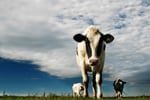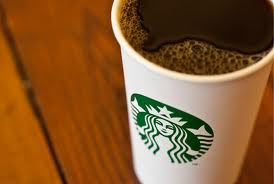Dr Erin Quann, director of regulatory affairs at the Dairy Research Institute, unveiled a raft of data compiled from the National Health and Nutrition Examination Surveys (NHANES) from 1976 through 2010 for children and adolescents.
This showed that the percentage of kids drinking soda fell from 55% of kids aged 6-12 in 2001-2006 to 45% in 2007-2010.
And the drop was even sharper for teens, with the percentage of soda drinkers falling from 67% of 13-17 year olds in 2001-2006 to just 53% in 2007-2010.
While milk consumption among children is also dropping, the declining trends on soda are much more recent, said Quann.
Indeed, the percentage of 6-12-year-old kids drinking soda had been rising steadily from 1976 to 2006 but then started to turn around in the 2007-2010 period.
Among 13-17 year olds, the reversal started earlier, with 2001-2006 data already showing teens switching to other beverages.
Fewer teens are drinking 100% juice

A similar trend is also evident in 100% fruit juice.
While the percentages of children drinking 100% fruit juice had been rising steadily amongst all age groups up to 2006, the 2007-2010 NHANES data shows that this trend hit reverse in the 13-17yr age group in 2007-2010 as teens started to try other beverages.
The average amount juice drinkers are consuming is also going down.
However, toddlers are still big fans, with 63% of three-year-olds categorized as juice drinkers, compared with 38% of 6-12 year olds and just 24% of 13-17 year olds.
Consumption of fruit drinks, however, has not changed much in the past three decades, noted Dr Quann.
The nutrients lost through declining milk consumption are not being replaced by other beverages

However, the biggest story to emerge from the statistics from a nutritional perspective is the steady drop in milk consumption, she said.
For example, the percentage of children that drink milk aged 6-12 has fallen from almost 90% in 1976-80 to around 73% in 2007-10 while among 13-17 year-olds it has fallen even more sharply, from just over 75% in 1976-80 to just 57% in 2007-10, she said.
“We’re seeing a steady sharp decline in school age milk drinkers and nearly half of teenagers do not drink milk.”
Nearly half of teenagers do not drink milk
And even those children that are drinking milk are drinking less, she noted, with average daily consumption for milk drinkers aged 6-12 falling from 17 fluid ounces in 1976-80 to 13 fl oz in 2007-10.
Among 13-17 year old milk drinkers, meanwhile, average consumption has dropped from 19 fl oz in 1976-80 to just 14 fl oz in 2007-10.
The trends are particularly worrying as milk is a key source of calcium, vitamin D and potassium and these nutrients are not being replaced as kids switch to other beverages, she said.
"They’re losing calories, but they’re also losing nutrients."
Forget milk and juice; teens are drinking sports drinks, energy drinks, tea and coffee…

So what are kids drinking instead?
It’s well known that children expand their beverage options as they get older, said Dr Quann, with 12%, 9% and 17% of 13-17 year olds now drinking sports beverages, coffee and tea respectively, although she did not present data on growth trends for these beverages over the period covered by the NHANES data set.
